June 13, 2011 14:30 (JST): Shizuoka tells tea retailer to conceal radiation info - Shizuoka Prefecture told a Tokyo-based mail order company not to say anything on its website about excessive radioactive material being found in tea from the prefecture, the retailer said Friday. After Radishbo-ya Co. made an inquiry to the Shizuoka Prefectural Government about the matter Monday, a prefectural official told the company not to disclose the finding due to fears the message would cause unwarranted harm to Shizuoka tea growers, adding that the prefecture would confirm the finding on its own, according to the retailer. Radishbo-ya, for its part, sent purchasers of the tea letters informing them about the radiation and offered to recall the products. (Source: The Japan Times) June 13, 2011 10:50 (JST): March 11th tsunami a record 40-meters high - Japan's Meteorological Agency and researchers have found that the tsunami of March 11th reached heights of up to 40 meters. The precise height of the waves was not clear because automatic tide-gauge stations were destroyed and blackouts and communication failures occurred at the time of the disaster. Experts have looked into traces of each tsunami in the affected area and found that around 10-meter waves reached wide areas of Iwate, Miyagi and Fukushima Prefectures. (Source: nhk.or.jp) 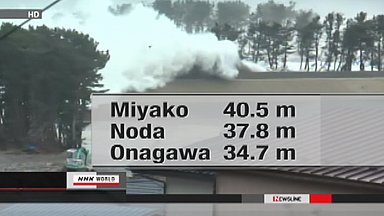 June 13, 2011 8:05 (JST): IAEA Draws Fire Over Japan Crisis - Officials in three Western countries are attempting to sideline the head of the International Atomic Energy Agency from international nuclear safety discussions amid their growing concerns about the U.N. nuclear agency's handling of Japan's atomic crisis. Senior nuclear-affairs officials from the three nations in recent weeks have quietly criticized the IAEA for failing to provide quick and accurate analysis of the danger posed by the accident at the tsunami-stricken Fukushima Daiichi plant. In particular, they have raised questions about whether the agency and its head, former Japanese diplomat Yukiya Amano, have adequately criticized Japan's nuclear disaster plans and response to the crisis. More... June 12, 2011 20:45 (JST): 40 percent of temporary housing left unoccupied in disaster-hit areas - Over 40 percent of temporary housing in areas affected by the March 11 Great East Japan Earthquake, tsunami and ensuing nuclear crisis remains unoccupied while many people are still waiting for keys to their accommodation three months after the disaster, the Mainichi has learned. Seven municipalities had no temporary housing completed and two others said they had yet to provide statistics. Around 20,225 temporary housing units were available for use in the 33 municipalities, but only 11,958 of them were actually being used by disaster victims. All the provisional living quarters were occupied in Miyako, Hirono and Tanohata in Iwate Prefecture as well as the Fukushima Prefecture town of Shinchi. (Source: Mainichi Daily News) June 12, 2011 10:25 (JST): Japanese hold anti-nuclear rallies - A series of anti-nuclear demonstrations were held across Japan on Saturday. The rallies coincided with the 3-month anniversary of the March 11th earthquake and tsunami that resulted in the accident at the Fukushima Daiichi nuclear power plant. About 2,400 protesters took part in a rally in central Tokyo. Gathering in Minato Ward, they called for the closure of nuclear power plants and a change in the government's energy policies. A man from Fukushima Prefecture said the nuclear accident is a problem for all Japanese people. He said as long as the country continues to rely on nuclear power, another Fukushima-type accident could happen. (Source: nhk.or.jp) 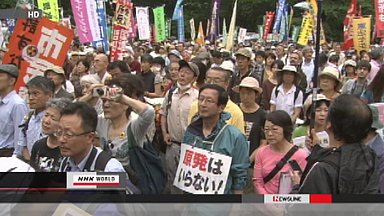 June 12, 2011 7:40 (JST): Born out of tsunami 'mess,' radio station gives voice to recovery - Reuniting friends, announcing restaurant and shop reopenings, sharing information on where people can get health care, it's all in a day's work for the crew of Miyako FM 77.4, a makeshift radio station born days after the deadly tsunami of March 11 swept over their city. Miyako, tucked into a state park and home to 60,000 people, was hard hit when the quake-generated waves roared ashore: At least 420 people were killed in the city, 3,670 homes were destroyed, and at least 1,170 were left homeless. Satou Shoji, 61, a retired Miyako city worker who runs the station, said he and other members of the Miyako Community Broadcasting Society quickly got permission to go on the air and arranged for the equipment they needed, including audio processors, a microphone, and a sound mixer. They uttered their first words on the air on March 22 -- just 11 days after the quake. (Source: msnbc.com) June 11, 2011 11:35 (JST): Japan Marks Three Months Since Earthquake - Japan will mark three months Saturday since its devastating earthquake and tsunami, and the resulting nuclear crisis, with the prime minister visiting the disaster zone and thousands set for anti-nuclear protests. Frustration has run high in Japan as the Fukushima nuclear crisis shows no sign of ending, and nearly 100,000 evacuees remain holed up in more than 2,400 crowded shelters, many of them jobless and worried about their future. Rebuilding the muddy wastelands of the northeastern Tohoku region -- an area now covered in 25 million tons (22.7 million tonnes) of rubble -- will take up to a decade and cost hundreds of billions of dollars, say experts. (Source: www.myfoxmemphis.com) 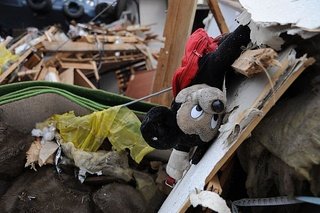 Mickey Mouse doll lies among tsunami debris in Ofunato June 11, 2011 7:55 (JST): Gov't report urges mental care for victims of earthquake and tsunami - People who lost loved ones or property in the March 11 earthquake and tsunami face a heightened suicide risk and should be provided care for years to ensure their mental and emotional wellbeing, a government report said Friday. A total of 31,690 persons took their lives in 2010, marking the 13th consecutive year that the toll exceeded 30,000. Regarding victims of the magnitude 9.0 temblor and ensuing tsunami, the report warned they are prone to stress induced by the aftermath of the disaster and could develop post-traumatic stress disorder. They will likely remain afflicted by the sadness and sense of loss induced by the deaths of family members, friends and acquaintances in the wake of the natural disaster. (Source: Japan Today) June 10, 2011 22:15 (JST): More than 8,000 still missing after quake - The National Police Agency says 8,095 people are still missing three months after the March 11th earthquake and tsunami. Of the Japan death toll of 15,405 people, about 2,000 have not yet been identified. Police say they are attempting to identify the bodies using DNA samples collected from people searching for their family members. More than 2,000 police officers continue search operations in Miyagi, Iwate, and Fukushima prefectures in northeastern Japan. (Source: nhk.or.jp) June 10, 2011 10:25 (JST): Fukushima's Date City to give dosimeters to all children - The Date city office in Fukushima Prefecture said Thursday it will distribute dosimeters to all children attending preschool as well as elementary and junior high schools in the city amid growing worries over exposure to radiation from the crippled Fukushima Daichi nuclear power station nearby. The city said the distribution of about 8,000 dosimeters will be part of its efforts to ensure children's health as there are radiation "hot spots" in the city, which is adjacent to Iitate, which is within a government-set evacuation zone. The Fukushima Daiichi plant, southeast of Date, has been crippled since the March 11 quake and tsunami knocked out its power, triggering the country's worst ever nuclear crisis. (Source: Japan Today) June 10, 2011 7:20 (JST): Japan mayor wants tsunami-hit rice paddies to go solar - A Japanese mayor is seeking to rebuild his city into a renewable energy hub by placing solar panels on top of rice paddies that were devastated by the March earthquake and tsunami. Mayor Katsunobu Sakurai put Minami Soma, 25 km (16 miles) from the tsunami-crippled Fukushima nuclear power plant, on the global map after his plea for assistance via YouTube reverberated around the world. TIME magazine also chose the 55-year-old former farmer as among the 100 most influential people in the world. Sakurai told reporters on Thursday that more than 40 square kilometres of the city, including rice paddies, were ruined by the massive tsunami waves on March 11. More... June 9, 2011 21:35 (JST): TEPCO plans for possible rolling blackouts - Tokyo Electric Power Company has released a plan to conduct rolling blackouts this summer if energy saving measures alone are not enough to prevent a sudden, total blackout. The contingency plan announced on Thursday divides the 9 prefectures being served by the utility into five groups. Each group would experience one 2-hour blackout a day. When TEPCO conducted similar planned outages in the aftermath of the March 11th disaster, consumers complained since some groups were subjected to blackouts twice a day, each lasting about 3 hours. (Source: nhk.or.jp) June 9, 2011 6:05 (JST): Fukushima doctor shortage - Fukushima Medical University is launching an intern system for young doctors to work in quake-hit areas while training in radio-therapeutics. The move is part of efforts to deal with acute shortages of doctors in the prefecture as a result of the nuclear crisis at the Fukushima Daiichi power plant. The Medical Association of Fukushima Prefecture says many doctors have left to work elsewhere since losing their workplaces in the wake of the March 11th earthquake and ensuing nuclear crisis. The new intern system, set up with help from the Association, targets young doctors who have been practicing for 3 to 5 years and allows them to work at 7 Fukushima hospitals for up to 2 months, while attending radio-therapeutics classes at the university. (Source: nhk.or.jp) June 8, 2011 22:10 (JST): First container vessel departure since quake - A container ship has left a major port in northeastern Japan for the first time since the March 11th quake and tsunami, marking a step forward in the recovery of the region's distribution system. Mobile cranes loaded containers onto the ship at Sendai-Shiogama Port in Miyagi Prefecture on Wednesday. The vessel left for Tokyo with 70 containers of automobile tires made in the disaster-hit area. The disaster damaged 4 cranes at the port, the only major international hub in the Tohoku region. (Source: nhk.or.jp) 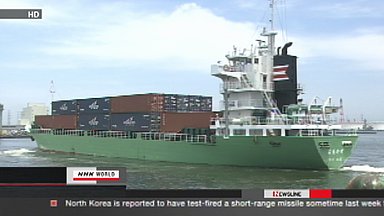 June 8, 2011 16:40 (JST): Blackout hits Fukushima nuclear plant's Nos. 1, 2 units - The crippled Fukushima Daiichi nuclear power plant suffered power outages at its Nos. 1 and 2 reactors temporarily Wednesday, with lights in the units' central control room being cut off and the transmission of radiation data being partially halted. The operator, Tokyo Electric Power Co, said the blackout did not affect its water injecting operation to cool the reactors, while Goshi Hosono, an adviser to Prime Minister Naoto Kan on the radiation leakage crisis, said the incident did not affect any equipment that could have caused an extremely serious situation. Electricity was restored around 5:30 p.m., TEPCO said, adding that it is investigating the cause of the power outage. (Source: Japan Today) June 8, 2011 8:45 (JST): No. of foreigners' deaths in March quake, tsunami reaches 28 - The total number of foreigners killed in the devastating March 11 quake and tsunami has reached 28, while several dozen others remain missing, Foreign Ministry officials said Monday. The ministry has so far listed the dead as nationals of China, Canada, South and North Korea, Pakistan, the Philippines and the United States following the twin disasters that hit the eastern and northeastern regions, the officials said. As of Monday, the overall death toll had reached 15,373, with 8,198 people still unaccounted for, according to the National Police Agency. (Source: Japan Today) June 8, 2011 0:05 (JST): 10 reasons to visit Japan this summer - Most of Japan is back to normal following the Great East Japan Earthquake and Tsunami on 11 March. Japan is a fantastic destination for a truly memorable holiday and many people in the country rely on tourism for their livelihoods. Here we give you just 10 of the many great reasons to holiday in Japan this summer: 1. Discounted hotel rates 2. Help Japan through volunteering 3. Geisha beer gardens 4. Hiking 5. Bullet trains 6. British Airways now flies to Haneda Airport 7. Beaches 8. Relaxed locals 9. Festivals 10. Climb Mt. Fuji 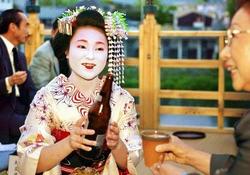 Kyoto geisha beer garden (Image via logspot.com) June 7, 2011 17:05 (JST): Earthquake sends Facebook Japan numbers skyrocketing - At the end of 2010, Facebook had yet to break the two million-user mark in Japan. Then, disaster struck. According to Social Bakers, Facebook Japan had crept up to between 2.3 to 2.4 million users when the Great Tohoku Disaster -- a 9.0 earthquake -- struck the island nation. As of May, users are now approaching 3.5 million, making Japan one of the fastest growing Facebook countries. Why the sudden turnaround? Facebook was the only consistent way to contact friends and family. Ironically, smart phones still transmitted data during the phone 'outage' making Facebook, and other social media, critical in the immediate aftermath of the quake. More... June 7, 2011 6:50 (JST): To cut power, Tokyo city workers try 'summer time' - Tokyo city employees are starting work an hour earlier to conserve energy this summer amid a power crunch spawned by the closing of a tsunami-hit nuclear plant. The Tokyo government on Monday moved up many workers' starting time by an hour. Those on the earliest shift start at 7:30 a.m. and will be allowed to leave at 4:15 p.m. Some 9,500 employees at the city's headquarters are participating. By July, that number will grow to 25,000. While employees will start work earlier, the clocks won't change. (Source: businessweek.com) June 6, 2011 12:45 (JST): Therapy dogs to tour disaster-hit areas - A group of therapy dog trainers from Tokyo will begin a tour of areas hit by the Great East Japan Earthquake in mid-June, hoping close contact with dogs trained to provide affection and comfort will benefit quake survivors in evacuation centers. The planned tour comes after the International Therapy Dog Association visited evacuation centers in Ishinomaki and Onagawacho in Miyagi Prefecture from May 1 to May 3. Some evacuees were overcome with emotion and cried as they hugged the dogs. The June plan is for five therapy dogs and six staff members to visit evacuation centers and makeshift houses. (Source: Daily Yomiuri) 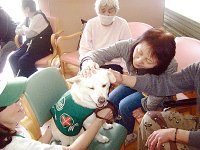 Disaster victims pet a therapy dog at an evacuation center in Onagawacho, Miyagi Prefecture. June 6, 2011 7:53 (JST): Over Y169 bil in disaster relief donations still not distributed - More than 169 billion yen in relief money offered as donations to the Japanese Red Cross Society and the Central Community Chest of Japan for people affected by the March 11 earthquake and tsunami is still being kept by the two bodies. Of the 251.3 billion yen collected by the two groups, only 82.2 billion yen, or about one-third, has been sent to 15 prefectures hit by the disaster, as a committee that decides on the allocation of the money had over-assessed the scope of damage amid difficulty in grasping the whole picture of the calamity. The committee which involves entities such as the Red Cross Society and the 15 prefectural governments and has its secretariat at the Health, Labor and Welfare Ministry, is expected to decide at its meeting Monday on a new set of benchmarks to distribute the leftover money. (Source: Japan Today) June 5, 2011 23:05 (JST): Missionary couple in Japan hopes to help earthquake/tsunami victims - When Wataru and Heidi Homeier Minezaki opened their home to evacuees from Fukushima to escape fallout from the earthquake-damaged Daiichi nuclear power plant, they knew their hospitality might be in vain. "In Japan, that offer is unheard of," said Heidi Minezaki, who grew up in Springfield, Illinois and now lives with her husband in Sano, about 100 miles south of Fukushima. "They choose community over personal comfort." About 280 evacuees from Fukushima and the surrounding towns of Miyagi and Iwate have made their way to Sano, a city of 122,000. Heidi said that while other families also have opened their houses, most of the evacuees have preferred to stay in a community center or public housing. (Source: The State Journal-Register) 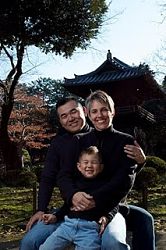 Wataru, Heidi, and Luke Minezaki 12th week updates continued here: Strongest Ever Japan Earthquake and Tsunami, News updates for May 28-June 3, 2011 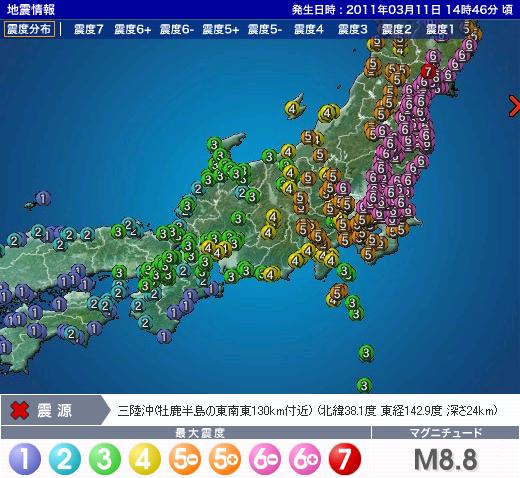 Mar. 11, 2011, 2:46 PM, Magnitude 8.8 Japan Earthquake & Tsunami Location & Intensities (Japan seismic intensity scale is from 0 to 7) (Click here for locations & intensities of latest earthquakes) Update: As of 11:25 am Sun. Mar. 13, since the BIG one on Fri. Mar. 11 at 2:46 pm, there have been 10 additional earthquakes of Intensity 5 or greater (books fall off shelves and furniture moves) and 53 additional earthquakes of Intensity 4 or greater (hanging objects swing considerably and dishes in a cupboard rattle). The Japan earthquake epicenter was about 100 mi. (160 km) east of Sendai, which is about 200 mi. (320 km) NNE of Tokyo (View Mar. 11, 2011 Japan Earthquake & Tsunami in a larger map) (click blue placemarkers to read labels) Links: Jhelp.com - 24-hour, nonprofit worldwide emergency assistance service since 1975, and has been on-site in Sendai serving meals since the 2nd day after the disaster: I. Emergency Help - If you need help in any way from anywhere in Japan, please call or email for assistance. Local volunteers are on site throughout Japan to help. Telephone Services are very bad, so numbers will work sporadically, but for emergency assistance, please call 0570-000-911 or 090-3080-6711 or 090-7170-4769 or contact www.jhelp.com or team@jhelp.com from throughout Japan. If you are able to help in providing a place to stay or other assistance, please contact team@jhelp.com. II. Volunteers - Those able to help on-site in Sendai, Japan or assist locally, are asked to send name, telephone, and age to team@jhelp.com III. Emergency Supplies - Supplies urgently needed on-site are: 20 Liter Metal Gasoline Cans, Bottled Water, Canned and instant food, sleeping bags, electric water pots, coffee, tea, cream, powdered milk, tents, rice, used laptop computers and active wireless internet devices and airline mileage, Disaster Relief Vehicle IV. Assistance - Support can be made to Postal Furikae 00160 7 162438 - Nihon Kinkyu Enjotai (The Japan Emergency Team) From overseas: Bank Name - Mitsui Sumitomo Bank, Regular Account Shinjuku Dori Shiten Agape House Account Number - 6949187 Swift Number - SMBCJPJT2 Address of Bank - Sumiyoshi Ku Shinjuku-ku, Tokyo, Japan 162-0005 Google Crisis Response - 2011 Japanese Earthquake and Tsunami IAEA Updates on Japan earthquake and tsunami Fukushima International Association - offers a free English Information Service for Non-Japanese residents of Fukushima. Includes information for people in the area with the latest Japan earthquake and tsunami news, locations of evacuation centers, road conditions, emergency radiation screening, etc. Earthquakes Location & Intensity Map (Japanese) Tokyo Electric Power Company (TEPCO) Press Releases (owner of Fukushima nuclear power plant) Tokyo English Life Line (TELL) - Japan Earthquake and Tsunami News, Help, & Resources, Tel: 03-5774-0992 (9am - 11pm daily) Counseling Services for JET Programme Participants AJET Peer Support Group: 050-5534-5566 Fukushima I Nuclear Power Plant TEPCO rolling blackout plan (from Mar. 23, 2011) (Note: As of April 8, 2011, the rolling blackouts have been suspended till probably summer.) Narita Airport Flight info Health Information - 2011 Japan Earthquake: Helpful information compiled by the Tokyo U.S. Embassy from U.S. and Japanese government agencies that you can use to support your continued safety and well being after disasters like earthquakes, tsunamis, and nucear plant accidents. How to "Shelter-in-Place during Radiation Emergencies News
Feeds:
Disaster
Preparedness:
More Japan quake/tsunami news updates...
Strongest
Ever Japan Earthquake and Tsunami
(last updated page)
News updates for May 28-June 3, 2011 (12th week) News updates for May 21-27, 2011 (11th week) News updates for May 14-20, 2011 (10th week) News updates for May 7-13, 2011 (9th week) News updates for April 30-May 6, 2011 (8th week) News updates for April 23-29, 2011 (7th week)
News updates for April 16-22, 2011 (6th week)
News updates for April 9-15, 2011 (5th week)
News
updates for April 2-8, 2011
(4th week)
News
updates for Mar. 26-April 1, 2011
(3rd week)
News
updates for Mar. 19-25, 2011
(2nd week)
News updates for Mar. 12-18, 2011 (original page - 1st week after Mar. 11, 2011 quake)
|
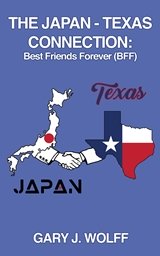 A FREE download at Smashwords 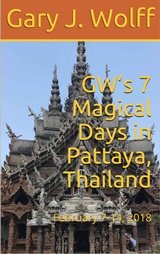 Only $1.99 at Amazon (¥214 at アマゾン日本) 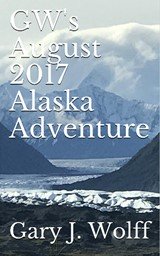 Only $2.99 at Amazon (¥340 at アマゾン日本)
Main Tier 2 Pages:  What's New? (blog) 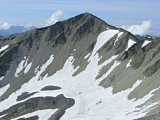 Highest Mountains in Japan 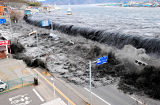 Strongest Ever Japan Earthquake and Tsunami 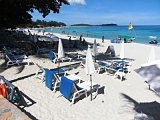
Pacific Islands Travel  What Japanese University Students Think About...?  Yoshimizu's Artwork What's New?
|
||||||
|
|
|||||||
|
|
|||||||

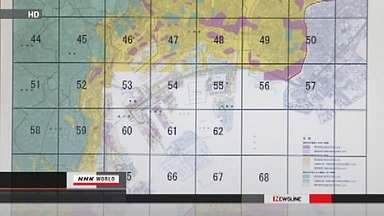
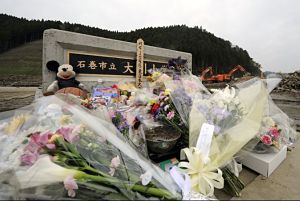
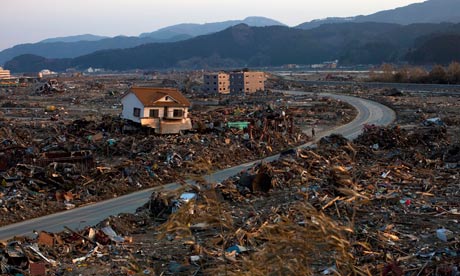
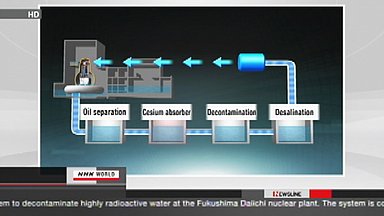
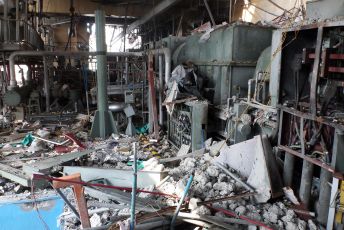
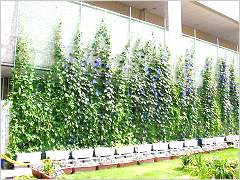


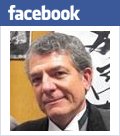




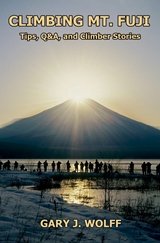

New! Add your comment
Have your say about this page! Feel free to comment in the box below: